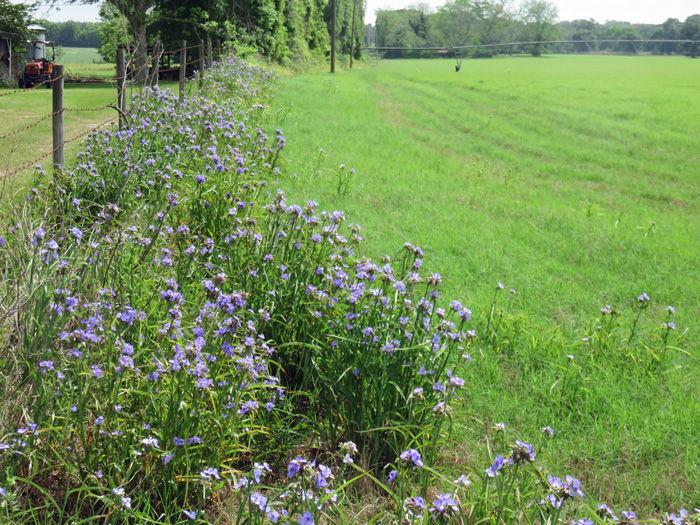
This time each spring you can see purple flowering plants up and down roadsides all across North Florida. Common Spiderwort (Tradescantia ohiensis), a.k.a. bluejacket, blooms really make the plants standout this time of year. Typically the blooms are most noticeable in the morning and fade and disappear later in the day. While many may consider this just a beautiful wildflower along roadsides, it could become a serious problem in hayfields.

The spiderwort does have very showy, beautiful flowers, but these plants spread and rapidly cover areas that are not cultivated, or are infrequently mowed like roadside right-of-ways, fallow fields, or hayfields.
There are no labeled herbicides that have proven to be effective against this weed in Bahia or Bermudagrass pastures. Dr. Jay Ferrell, UF/IFAS Weed Specialist, conducted a herbicide trial in a Bermudagrass hayfield to compare their effectiveness.
We tested every pasture herbicide and several combinations. We even looked at sequential applications but none provided long-term control. Remedy will burn the plants down, but 100% will re-sprout in 2-4 weeks. This was by far our best treatment, but it still failed. The combination that did work was a quart per acre of Remedy, followed by light tillage to break up the root crowns. I don’t like this option, but it is all that worked.

This plant seems to be spreading across North Florida. Currently it is most noticeable along roadways, but it may be spreading into pastures and hayfields. Scout for this plant in the early part of the day when the blooms are most obvious. If you see it growing in pastures or hayfields, make the time to either spray and till the patches, or dig up individual plants as you come across them. Hand removing a few plants can now may prevent some major problems in the future. Spiderwort does seem to form dense patches over time, like the one in the photo of hayfield above.
 0
0
